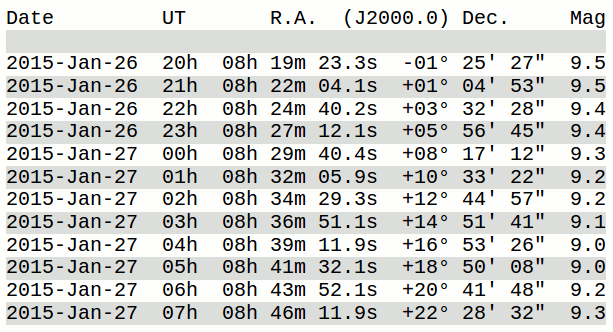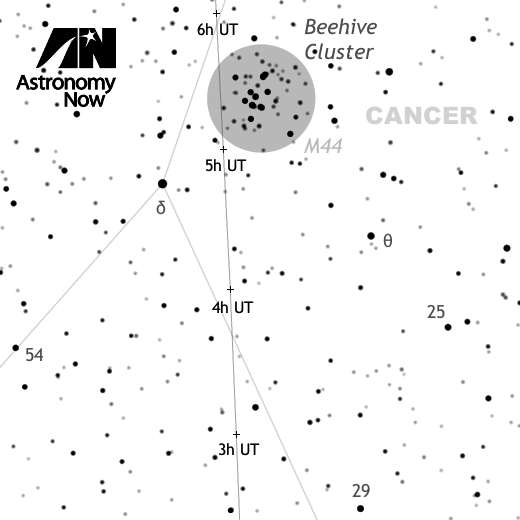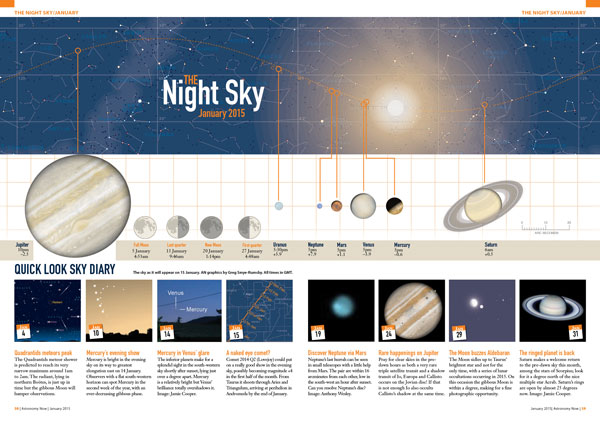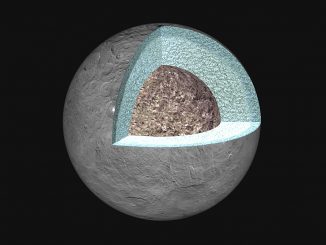Discovered on 30th January 2004 by the Lincoln Near-Earth Asteroid Research (LINEAR) project at Socorro, New Mexico, 357439 (2004 BL86) is a near-Earth asteroid estimated to be 440–1000 metres in diameter that will pass a mere 3.1 lunar distances (747000 miles; 1.2 million kilometres) from our planet at 4:20 pm GMT on Monday, 26th January 2015.

Observing 2004 BL86
At the instant the asteroid is closest to the Earth on Monday the 26th it will be below the horizon for UK observers, but we only have to wait a further four hours for it to have risen enough to be observable in the constellation of Hydra low to the east-southeast, almost midway between Jupiter and Sirius at 8 pm GMT. By this time 2004 BL86 will have brightened to around magnitude +9.5 and therefore visible in small telescopes. There will be a 7-day-old waxing crescent Moon in Pisces to the southwest at this time, but it will set at 1 am the following morning as seen from the centre of the British Isles.
Since 2004 BL86 is passing so very close to Earth, its orbit is being perturbed by our planet’s gravitational field. Also, its precise apparent position against the background stars is altered by observer parallax, but you may enter the following hourly J2000.0 coordinates computed for the centre of the British Isles into a computerised GoTo mount with minimal error for all UK-based observers: The asteroid crosses the border into Cancer soon after 11 pm GMT on the 26th, by which time its declination will be close to +6°. As Tuesday the 27th arrives, 2004 BL86 will be highest in the UK sky and heading north at a rate of 2⅓° per hour, shining at magnitude +9.3.
The asteroid crosses the border into Cancer soon after 11 pm GMT on the 26th, by which time its declination will be close to +6°. As Tuesday the 27th arrives, 2004 BL86 will be highest in the UK sky and heading north at a rate of 2⅓° per hour, shining at magnitude +9.3.
Astronomical twilight will be starting soon after 6 am for the centre of the British Isles, the asteroid will be just 20° above the western horizon and, at magnitude +9.2, starting to dim again as it heads away until its next encounter with Earth. This is the closest 2004 BL86 will get to us in the next 200 years and the nearest approach by any known space rock this large until asteroid 1999 AN10 flies past Earth in 2027. Clear skies!
For further background information, see this former news story.
Inside the magazine
Peter Grego tells you more about Earth’s close encounter with asteroid 2004 BL86 in the January edition of Astronomy Now. Never miss an issue by subscribing to the UK’s biggest astronomy magazine. Also available for iPad/iPhone and Android devices.




